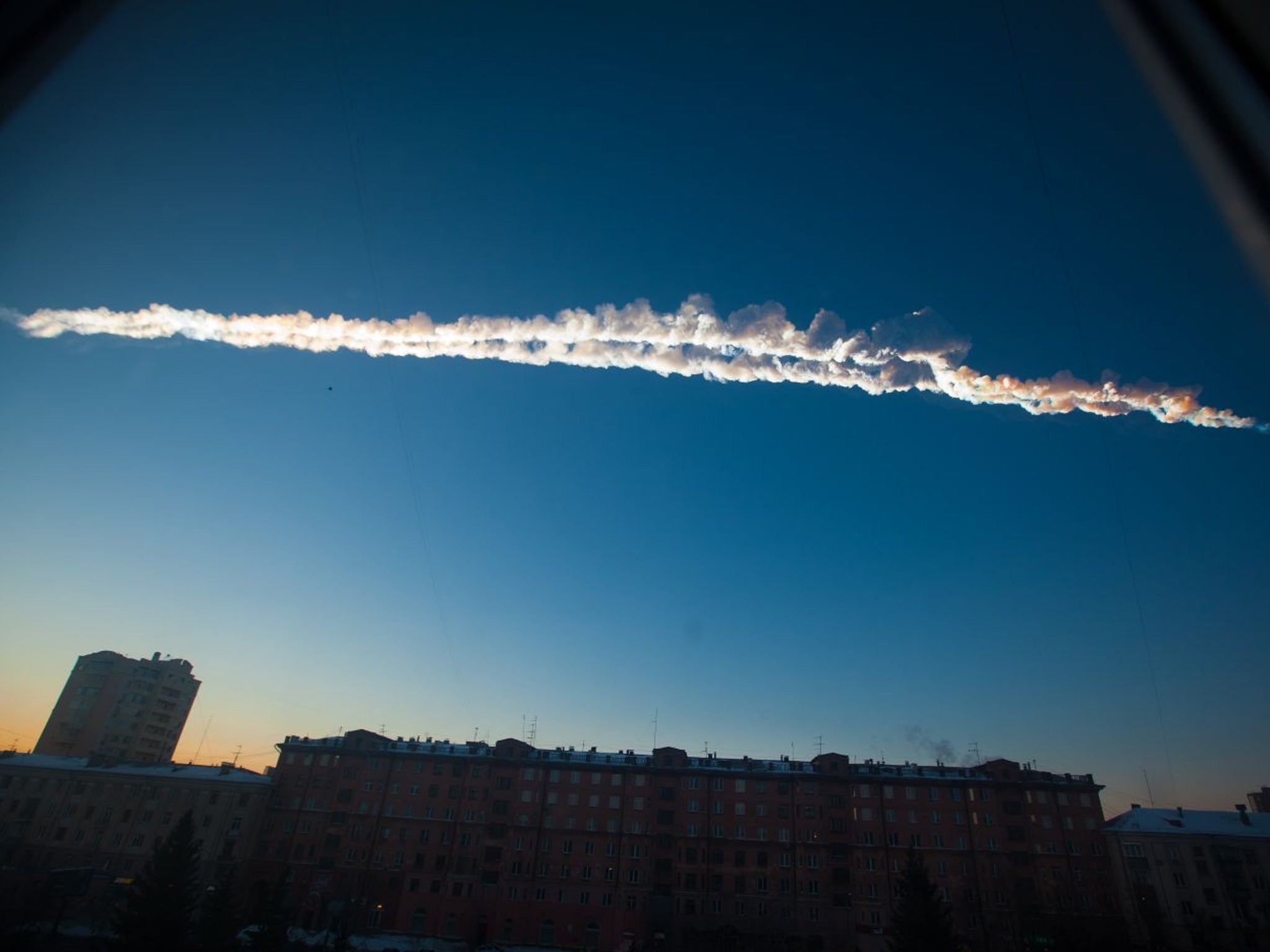Asteroid 2000 EM26 'as big as three football fields' hurtles past Earth
Slooh Space Camera tracked the asteroid as it raced past at 27,000 mph

An asteroid believed to be roughly the size of three football fields hurtled past the Earth on Monday, just over a year after one exploded over Russia and injured 1,200 people.
The Slooh Space Camera followed the asteroid's approach via a live video stream from 9pm on Monday evening as it raced past the Earth at 27,000 mph.
Slooh's flagship observatory on Mount Teide in Spain's Canary Islands was iced over and unable to record live images of the asteroid, Paul Cox, Slooh's technical and research director, said on the one-hour webcast, but pictures were received from a Dubai observatory.
The 270 metre asteroid, known as 2000 EM26, streaked past Earth at a distance of about 2.1 million miles (3.4 million km) little more than a year after another asteroid exploded on 15 February over Chelyabinsk, 900 milles east of Moscow. Over 1,000 people were injured following a massive shock wave that shattered windows and damaged buildings.
The ten-ton meteor that entered the earth’s atmosphere at 33,000mph ripped across the sky above Russia’s Ural Mountains.
Region officials in Chelyabinsk had wanted to mark the anniversary by giving a piece of the meteorite to each 2014 Winter Olympic athlete who won a medal on Saturday at the Sochi Games. However, the International Olympic Committee at the last minute said it could be done only after the Games.
"We continue to discover these potentially hazardous asteroids - sometimes only days before they make their close approaches to Earth," Cox said in a statement before the show.
He added, "We need to find them before they find us!"
The Dubai Astronomy Group provided Slooh photos of the part of the sky where the rock was expected to be seen, but its motion could not be picked out immediately in a live webcast against the backdrop of night-time stars.
Additional reporting by Reuters
Join our commenting forum
Join thought-provoking conversations, follow other Independent readers and see their replies
Comments